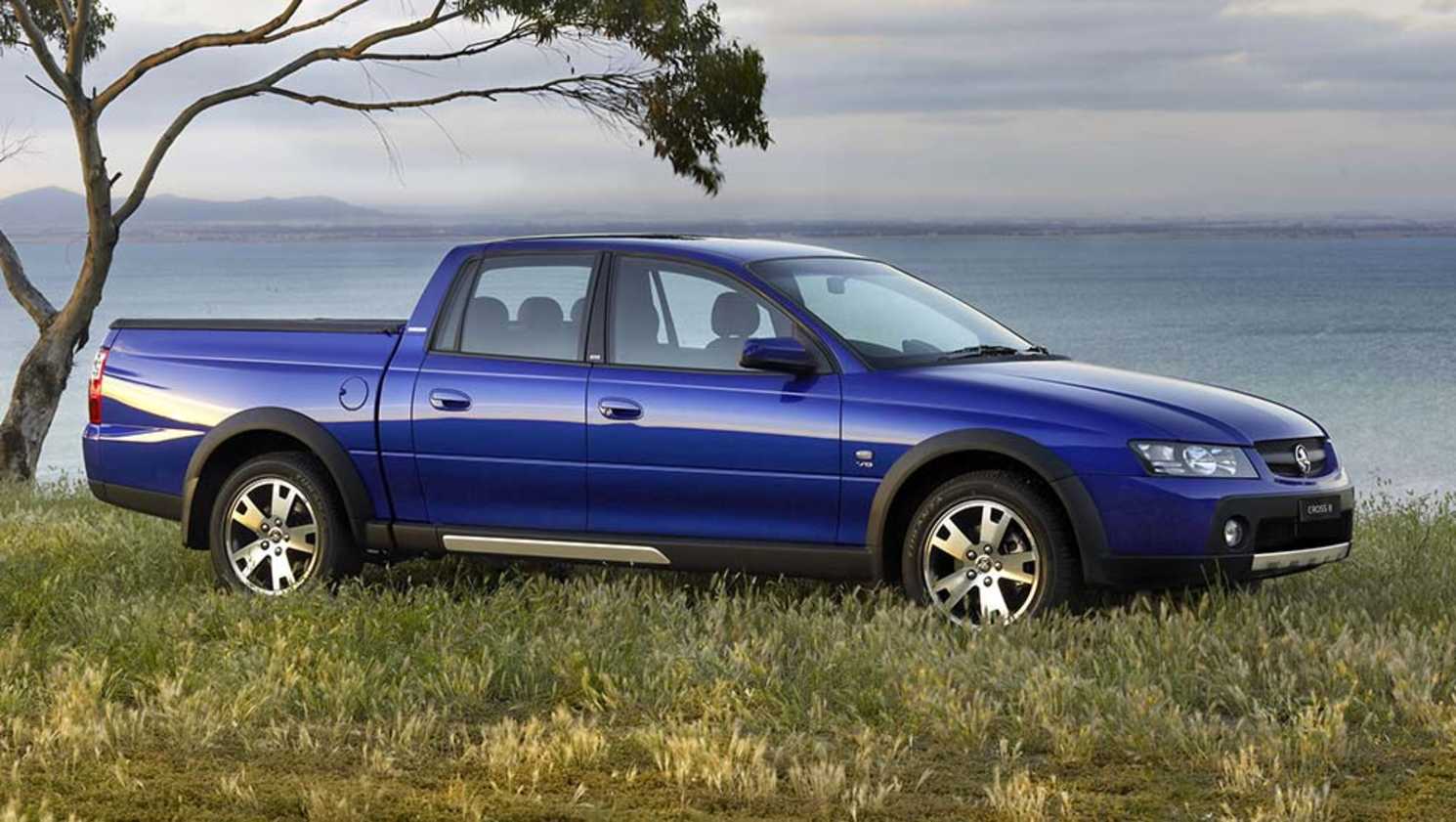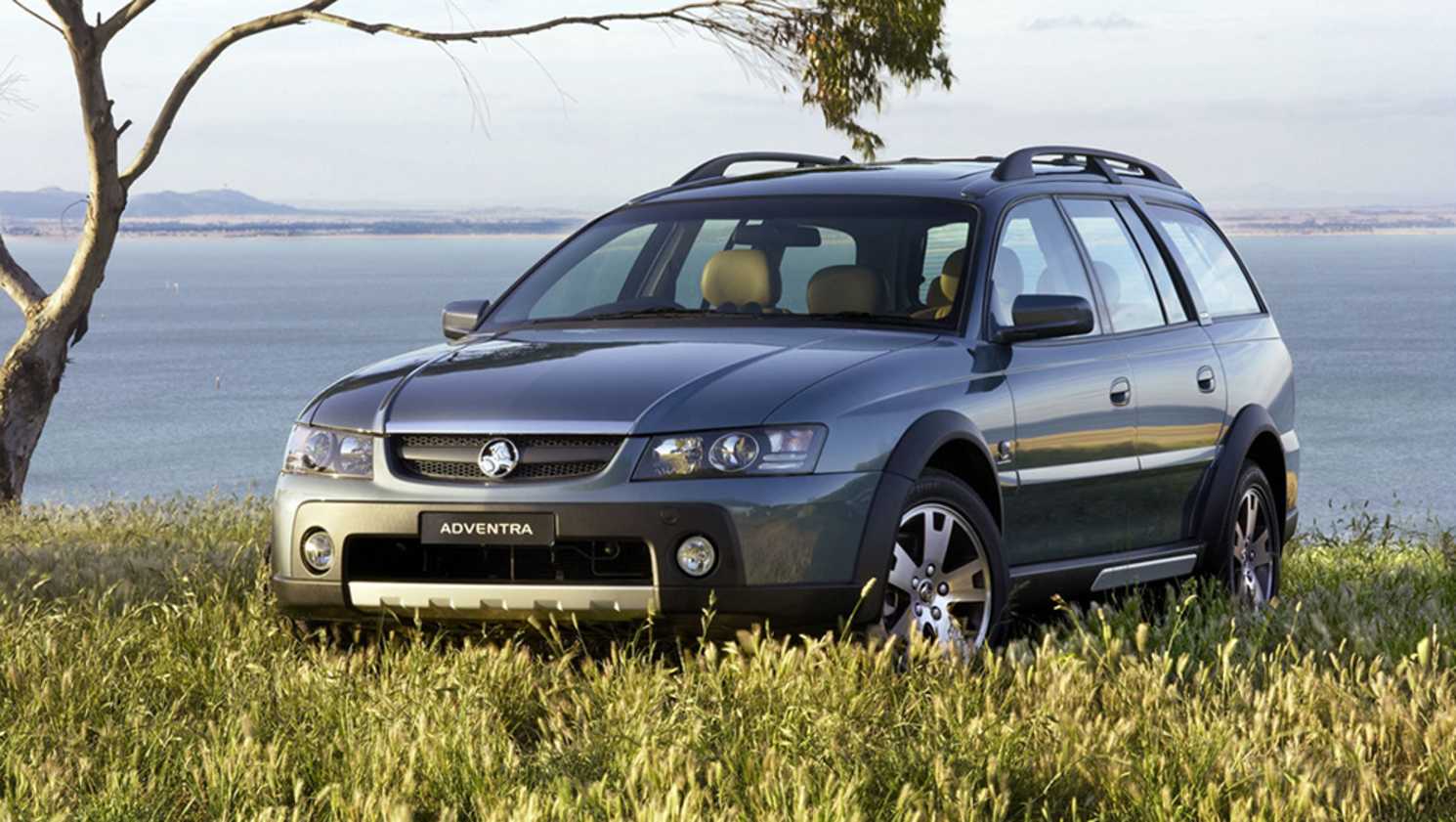Are these the cars that could have saved Holden?
A treasure trove of information about Holdens that never were has been unearthed this month, outlining a large number of unexpected and even surprising body-styles and drivetrains under development down at Fishermans Bend in Melbourne nearly 20 years ago.
Planned to be spun off the basic building blocks that became the so-called ‘Billion Dollar Baby’ VE Commodore program, many have only now come to light for the first time since they were conceived during Holden’s halcyon days of the early-to-mid 2000s.
Central to the plan was the VE’s Zeta platform’s strategy of broad flexibility. Dubbed “Flex Enablers”, it provided a sort of ‘plug-and-play’ scalability, through the development of interchangeable modules for the engine cradle and front suspension, underbody and door-frame areas, door lengths, rear suspension and fuel-tank sections.
Pencilled in for production sometime during the second half of the 2000s, the models detailed in the documentation as well as information gleaned from sources deep within Holden expose some never-before-seen oddities of quite extraordinary scope and ambition.
Welcome, then, to the cars (and SUVs and utes) that could have saved Holden – a heartbreaking journey into the past that – if things had worked out differently – promised a very different future for Australia’s Own.
Holden Commodore SUV and other secret cars GM could've green lit but didn't: Could the planned Ford Territory, Toyota Kluger rival have saved the lion brand?
01. Nullarbor SUV
.jpg)
The Ford Territory wouldn’t have been Australia’s only-ever indigenous SUV if Holden had its way.
Known nowadays as the Nullarbor, the seven-seat large SUV was to be built alongside the VE Commodore and WM Caprice ranges in Elizabeth, South Australia.
Slated for a circa-2008 launch, and with styling by rising Holden designer Ondrej Koromhaz (who also helped create the Torana TT36 Concept among other VE models, as well as the last-generation Barina), the look was meant to be very BMW X5-esque.
Based on the Zeta platform but sat on a longer wheelbase than the standard VE’s 2915mm, it’s been revealed by one Holden insider that the Nullarbor was engineered with a 50mm-higher dashboard cowl – a hugely expensive modification that probably points to other SUV applications within the GM portfolio to help amortise the massive investment.
With Saab also in the picture at the time, would that have included a 9-9X-badged luxury version?
Interestingly, the Nullarbor’s boxy proportions and spacious cabin gave Holden the freedom to style the far-sleeker VE Sportwagon using the sedan’s wheelbase, rather than the WM Statesman/Caprice's 3009mm long-wheelbase (LWB) set-up - something GMH had done with all wagons since the HQ of 1971.
Predictably, the local Commodore-derived engine line-up centred around the 3.6-litre V6 petrol and American 6.0-litre-plus V8s, driving either the rear or all four wheels, while a V6 turbo-diesel (possibly from VM Motori) was also in the mix – something that the Territory would not able to match until 2011.
Of all the cancelled Holden projects, the Nullarbor may have had the most impact, given the SUV’s inexorable rise in popularity worldwide. Whether it could have helped ensure the company’s Australian manufacturing future is debatable, but it certainly had all the right stuff to break the brand’s over-reliance on the Commodore in the decade that followed, which in turn may have seen GMH live on beyond 2020.
It’s understood that there just weren’t enough funds to see the Nullarbor through to developmental completion, as GM was haemorrhaging money by the time the decision was made for Holden to instead rely on the smaller and cheaper Captiva from GM DAT (ex-Daewoo) in South Korea. Pity.
A spiritual successor to the Nullarbor wouldn’t be forthcoming until the American GMC-built Acadia launched in late 2018, but by then it was too late for embattled Holden.
02. VE Ute Wagon

This is nothing like the failed VY/VZ Crewman – which was basically an elongated coupe-utility with skinny back doors and an abruptly upright rear backrest.
In contrast, the Ute Wagon was far more sophisticated, using a passenger-car body, but with an integrated but detachable canopy to expose a light-duty load bed, presumably extendable with the rear seats folded.
That said, there was also a Crew Cab workhorse version with a rear firewall separating cabin and tub. Clearly Holden was determined to make the Crewman concept fly.
03. VE ‘Adventra’

The second vehicle in the Zeta Platform Innovation Line was the ‘7-Seater Hi-Wagon’ – which, unlike the standard-wheelbase Sportwagon, appears to stick with the old LWB wagon strategy as per the preceding Commodore wagons.
However, a third row of seats takes the place of the latter’s cargo load deck, and that probably was thought to be the reason why Holden persisted with the Subaru Outback-style raised wagon, when the preceding VY/VZ Adventra failed to find a large-enough audience.
04. VE Shooting Brake, Coupe 60/Monaro and El Camino
.jpg)
One of the main pillars of the VE Flex Enablers strategy centred around doors and their apertures, with the production Commodore, Statesman/Caprice and Ute all having the same-sized items.
But there was another, elongated frameless door engineered for three disparate VE models that never saw the light of day, except as the Coupe 60 Concept at the 2008 Sydney Motor Show.
That car, of course, was originally designed to be the replacement for the high-profile but slow-selling V2/VZ Monaro. But it simply would have not stood a chance with the projected VE Monaro volume, even with the added Pontiac GTO and Vauxhall VXR Coupe exports, since the additional body engineering required to accommodate the frameless doors (remember, these have no central or B pillar) would have upped development costs by hundreds of millions of dollars.
One solution was to spread the investment over two new models – the VE Shooting Brake three-door hatch and El Camino coupe-utility.
The VE Shooting Brake was basically a VE Coupe 60/Monaro with a truncated tail and liftback, and was aimed at European buyers. Think of it as like the difference between a BMW 3 Series Coupe and Compact hatch (albeit on a larger scale), with a similar sort of buyer profile as the target. Leyland P76 Force 7, anybody? The VE El Camino, meanwhile, used the coupe doors to create a coupe-utility, similar in silhouette to the Ford XA-XC Falcon utes of the 1970s. This obviously had Chevrolet and Pontiac written all over it and was created specifically for US consumption.
Sadly, the numbers still just did not add up, and although Holden marked its 60th anniversary with the Coupe 60 in 2008, by then it was clear that the global financial crisis and GM’s sinking fortunes globally (it was only months away from declaring Chapter 11 bankruptcy by then) had put paid to the ‘coupe door’ VE trio. Instead, the production VE ute (and the stillborn cab-chassis as illustrated here) made do with the standard doors featuring an additional side light in the pillar.
05. VE-based Saab ‘9-9’
.jpg)
Arguably the most astonishing VE variant was a reskin proposed for Saab as a flagship sedan.
Ex-Opel designer Malcolm Ward revealed to CarsGuide some years ago that he had expected to spend at least one year at Holden in Melbourne from 2004, working on preliminary exterior and interior styling concepts, before GM cancelled the ‘Swedish Zeta’ project only a couple of months into his Australian tenure.
The reason? It seems the changes over the VE were deemed too costly, while the V6s and V8s Holden was developing were incompatible with the brand’s eco-centric four-cylinder turbo-petrol and -diesel engines.
As a postscript, it appears that the Swedish VE’s unique front and rear-end treatments did find their way in some form on the final 9-5 sedan from 2010 to 2012.
06. TT36 Torana
.jpg)
Remember the TT36 Torana Concept at the 2004 Sydney Motor Show? That was a design study built on another GM platform, but if it ever was to make it into production, the architecture was most likely to be another Innovation Line version of Zeta.
The smallest and shortest of all the VE-based projects (with a wheelbase 70mm shy of the production VEs), its aim was to create a premium mid-size sports/luxury sedan, giving GM a shot at the BMW 3 Series and Audi A5 Sportback set, courtesy of Holden’s engineering prowess.
Consequently, it is highly unlikely that the Torana name would have ever been seriously considered, despite the show car’s play at such nostalgia. After all, the LX/UC hatch Toranas of the '70s were conspicuous failures.
Even back in 2004, Holden said that any production version of the TT36 wasn't going to actually be built in Australia, just engineered here, meaning it was mainly conceived for Pontiac, Opel, Saab or Cadillac badges, rather than the lion one. Shame.
07. Other VE offshoots
.jpg)
Finally, the documentation outlines Holden’s desire for AWD as well as left-hand-drive capability for every VE offshoot, underlining the vast export opportunities within General Motors’ global network.
Back in the 2000s, this would have included Chevrolet, Pontiac, Cadillac, Oldsmobile and Buick for North America, Buick for China, Opel for Europe, Vauxhall for the United Kingdom and Daewoo (which Holden held a controlling stake in at the time) for South Korea.
Through the sober and embattled eyes of 2020, most of these may seem fanciful at best. But it must be remembered that, in the aftermath of the new millennial boom time and with dyed-in-the-wool car nut Bob Lutz in control of global product development up in Detroit, GM was cashed-up and ready to lead the automotive world again.
Holden’s managing director back then, Peter Hanenberger, was also a big believer of the VE projects.
Ultimately, it seems Holden may have simply over-capitalised in engineering large sedans and wagons for a world that – by 2005 – was starting to downsize en-masse, as consumers reeled from rocketing oil prices and reacted to more-favourable incentives to switch to lower-emissions vehicles.
However, the Nullarbor and VE Adventra would have established Holden in segments which were growing rapidly; likewise, the move to a dual-cab Ute Wagon might have paid dividends in the wake of rising pick-up sales as defined by the Ford Ranger, while the VE Shooting Brake and El Camino respectively might have been tailored to fit in with GM’s premium and US brands, exposing Holden to enormous export markets worldwide.
Shoulda, woulda, coulda saved Holden? Sadly, we’ll never know.





.jpg)

.jpg)


_0.jpg)
 (1).jpg)

.jpg)
.jpg)
.jpg)

.jpg)
.jpg)
_0.jpg)


.jpg)
.jpg)

.jpg)



.jpg)